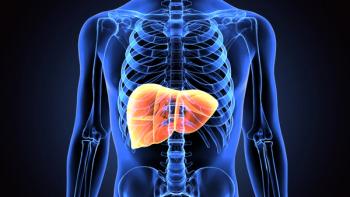
Look to Prison-Based Programs to Stop HCV Transmission
A modeling study involving people who are incarcerated and those that inject drugs in Australia shows that incarceration is a risk factor for transmission of the hepatitis C virus (HCV). The results highlight the importance of HCV programs targeting prison populations.
Prison-based prevention and treatment intervention for people who inject drugs may be especially important for reducing the transmission of the hepatitis C virus because incarceration is itself a risk factor in transmission, according to recently published study of incarcerated people in Australia,
“Our results are also consistent with findings from previous modeling studies that show prison-based prevention and treatment interventions can reduce HCV transmission in the community,” wrote lead author
In 2016 the World Health Organization set a goal of eliminating the public health threat of HCV by 2030. The goal was based partly on the advent of highly effective antiviral therapies for HCV, such as Mavyret (glecaprevir-pibrentasvir) and Zepatier (elbasvir-grazoprevir). Globally, more than 11 million people inject drugs and roughly 40% of those who do are infected with HCV, according to WHO. Moreover, the WHO estimates that 23% to 39% of new HCV infections happen among people who inject drugs and that 1 in 3 HCV deaths globally are attributed to injection drug use.
The study that Stone and his colleagues conducted examined the role prison-based interventions could play in eliminating HCV among intravenous drug users. Using Bayesian statistical theory and other modeling methods and data from New South Wales, Australia’s most populous state, they calculated that high incarceration rates increased the risk during incarceration and could be an important driver of HCV transmission among people who inject drugs.
“We projected the contribution of differences in transmission risk during and following incarceration to HCV transmission over 2020 to 2029,” writes Stone. “We estimated the past and potential future impact of prison-based opioid agonist therapyand HCV treatment.”
The study used data from New South Wales, incorporating elevated HCV acquisition risk among recently released people who inject rugs. They found evidence showing the risk of incarceration presented as a driver of HCV transmission among people who inject drugs. The investigators’ findings suggest that being incarcerated correlates with a 62% increased risk of HCV infection and that incarceration contributes to one-fifth of all new HCV transmission among people who inject drugs in New South Wales.
Using 2016 levels for people with or without prison-based interventions, the study also estimated the time it would take for HCV infections to fall 80%, (he WHO’s elimination target\. They concluded that between 2020 and 2029, HCV for incarcerated people who inject drugs will increase 23%. However, if prison-based interventions had not been implemented back in 2010, the HCV infection rate would be almost 30% higher.
“If current prison and community HCV treatment rates continue, there is a 98.8% probability that elimination targets will be achieved by 2030, with this decreasing to 10.1% without current prison-based interventions,” Stone writes.
Stone and his colleagues conclude that existing prison-based interventions, including opioid-agonist and HCV treatment, have reduced HCV transmission among the population that injects drugs. They also found that treatment interventions, and particularly HCV treatment, are crucial to attain the 2030 elimination target. But if those programs are discontinued, the probability of eliminating HCV in the injecting drug use population will drop from 99% to 10%.
“Our modeling demonstrates that NSW (New South Wales) is on track to achieve HCV elimination targets for incidence among PWID (people who inject drugs) by 2030 if current high treatment rates in both the community and prisons continue,” they concluded.
Newsletter
Get the latest industry news, event updates, and more from Managed healthcare Executive.






















































